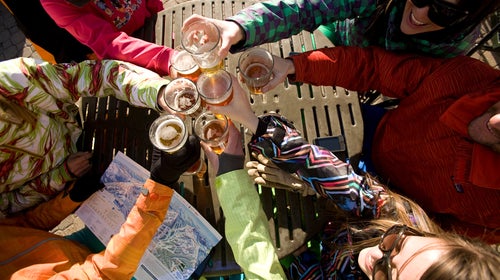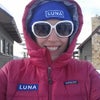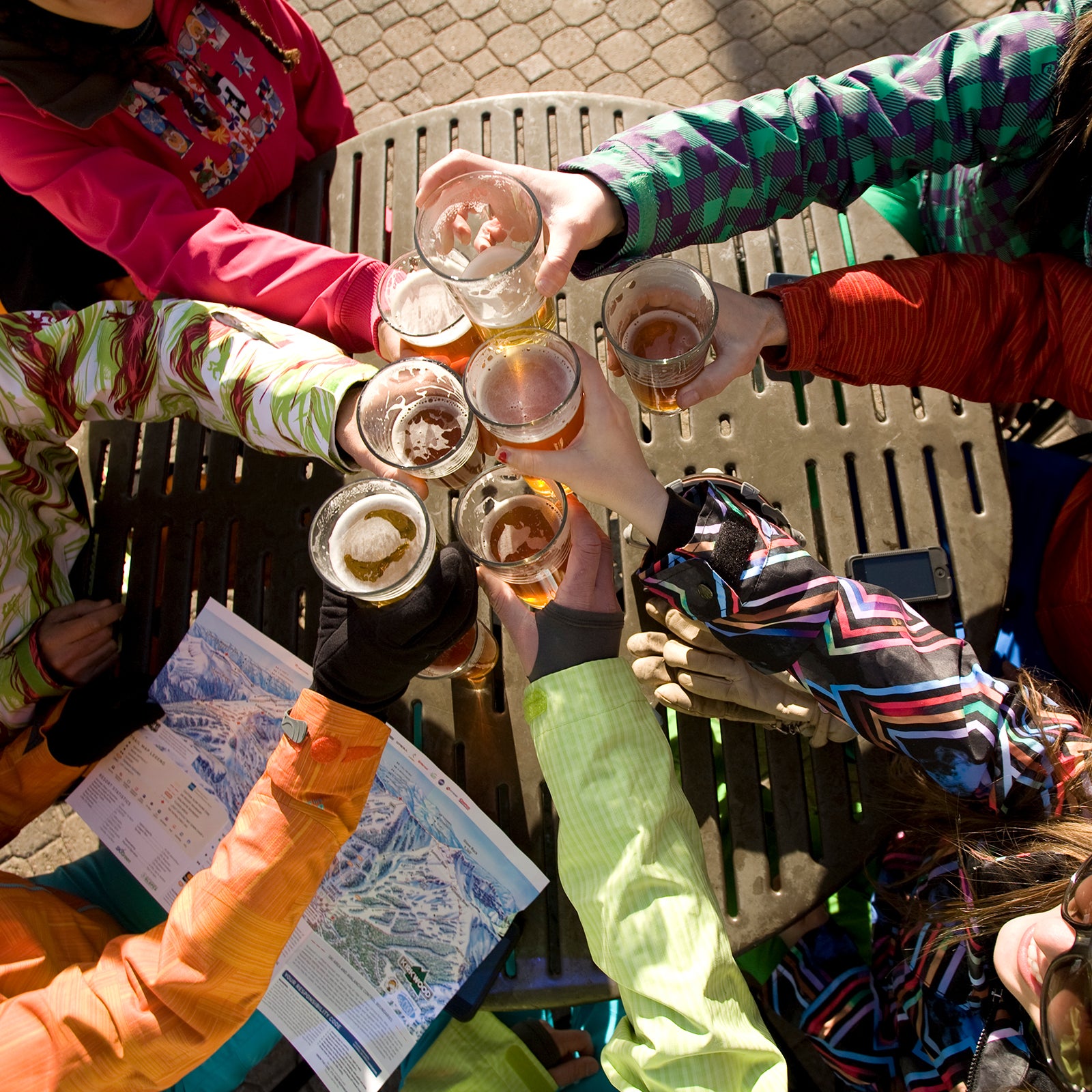Steve GumbleтАЩs friend would not shut up about this awesome microbrewery heтАЩd found on his last trip to Fort Collins, Colorado. тАЬHe either went to Fort Collins to mountain bike or hear Phish play,тАЭ╠¤says Gumble.╠¤He canтАЩt quite remember which, but those are his buddyтАЩs two favorite activities. What Gumble couldnтАЩt╠¤forget was╠¤the╠¤way his friend raved about the brewery, which was making an amazing brew called Fat Tire.
╠¤
It was the very early 1990s, and craft beer was something most folks hadnтАЩt yet heard of. Gumble, the owner of Telluride Liquor, also╠¤in Colorado, was always looking for new things to stock. So he drove up to Fort Collins and begged founder Jeff Lebesch to let him bring a trunkful home.╠¤
╠¤
Lebesch declined at first. He was barely able to keep up with demand in Fort Collins. But Gumble was persistent, and Lebesch let four cases go home with him to Telluride that afternoon.╠¤What would follow was a year or so of Gumble striking deals with dirtbags╠¤making the trek from Telluride to Fort Collins and back. If you bring me beer, IтАЩll help pay for your gas, he promised. Always in need of gas money, bikers, hikers, skiers, and climbers were happy to oblige.╠¤
╠¤╠¤
Outdoor enthusiasts tend to be sensation seekers. Craft beer, with its bitter IPAs and rich stouts, offers much more sensation per sip than macro beer. And bringing beer to friends who have never heard of it is almost as great as taking them to a secret swath of singletrack.╠¤Like Johnny Appleseed, but with hops and malt,╠¤dirtbags spread the gospel of handcrafted beer far and wide, helping spur the growth of the industry from a languid walk to a full-on gallop.
тАЬMost craft brewers are small, and the majority donтАЩt have money for mass-media advertising,тАЭ says Julia Herz, craft-beer program director at the . тАЬWord of mouth is truly the way most craft brewers get the message out.тАЭ Way back in the nineties, before Instagram existed, bikers, hikers, and climbers traveling around the country were the original influencers who fueled the microbrew revolution.╠¤
Gary Fish knew as far back as 1988, when he founded in Bend, Oregon, that the folks coming to ski were going to be important to his brewpubтАЩs success. To grow his business, his first marketing move was to try and get his beer served at the three nearby resorts. тАЬWe simply wanted to be at Mount╠¤Bachelor, so hopefully people would try our beer on the mountain and stop by our pub on the way out of town,тАЭ he remembers. That happened. And those folks usually took some home. тАЬOur first growlers were 40-ounce, missile-shaped former malt-liquor bottles, with╠¤crack and peel╠¤labels where we wrote with a Sharpie what was in the bottle. They didnтАЩt hold pressure very well, but we sold a lot of them,тАЭ Fish remembers.╠¤
Between 1995 and 2005, the number of brewpubs and microbreweries nearly doubled in the United States, from just 770 to 1,345. in the journal Wine Economics╠¤shows that growth started in California and Colorado, then moved into the Pacific Northwest, the Northeast, and finally all 50 states. Liquor laws and distribution opportunities played into how and where craft brew spread, but itтАЩs hard to ignore that good beer and adventure seem to happen in the same places.╠¤
тАЬWord of mouth is truly the way most craft brewers get the message out,тАЭ says the Brewers AssociationтАЩs Julia╠¤Herz, and way back in the nineties, before Instagram existed, bikers, hikers, and climbers traveling around the country were the original influencers.
Herz also helped spread the message long before her current role with the Brewers Association.╠¤In 1993, she quit her job at CNNтАЩs Washington, D.C., bureau to take a cross-country road trip. She and a friend lived off $15 a day, camping in national forests and parks.
At each stop, theyтАЩd find out if there was a microbrewery nearby, so they could get intel from other travelers in the taprooms. тАЬGoing to the microbreweries always got us to the best and safest places,тАЭ she says.╠¤TheyтАЩd swap tips on other breweries to try, too.
╠¤
New Belgium Brewery readily admits that outdoorsy folks were its best marketing tool in the companyтАЩs early years. Back then╠¤budgets were sparse, says Nora McCombs, manager for the companyтАЩs core-brands portfolio. But getting dirtbags to spread the word for New Belgium╠¤was never really a conscious choice;╠¤it just happened. тАЬIt was pretty organic. It was kind of a product of where weтАЩre located and the proximity of our first customers being into the outdoors,тАЭ╠¤she says. ╠¤
Word of mouth works better than any other kind of marketing. ,╠¤produced by marketing agency Convince and Convert, found that 83 percent of Americans are more likely to buy a product if a friend recommends it. Those numbers are particularly high among young people. ╠¤
╠¤
Nat Ross, who became known as the beer-smuggling bike racer, knows a thing or two about the power of word-of-mouth marketing.╠¤
Back in 1998, Ross was living in Breckenridge, Colorado,╠¤and flying overseas to race regularly. тАЬMy double-bike case was my smuggling case,тАЭ he says. Ross retrofitted the foam that was supposed to cushion his frame and fork to cradle bombers of Fat Tire and other Colorado brews. When he arrived in Europe, everyone hailed him as the guy who brought the good beer. Hard-to-get beer turned out to be a powerful friend-making tool. тАЬI would show up with the golden egg,тАЭ he says.╠¤On his way home, heтАЩd stuff the case full of Belgian beer and repeat the process in Colorado.╠¤
╠¤
This turned out to be such a potent marketing strategy that New Belgium Brewing eventually hired a guy whose sole job was to race bikes and pass out beer. Jake Kirkpatrick was the companyтАЩs first-ever paid athlete. A single-speed mountain biker, heтАЩd race first, then spend the rest of the day unloading cold ones on unsuspecting race attendees. тАЬA lot of people back then had never heard of craft beer,тАЭ he remembers of his trips overseas in the 1990s. Kirkpatrick got to blow their minds. тАЬNo one says no to a free beer,тАЭ and when itтАЩs something so different from what theyтАЩve had in the past? Those racers went home and told their friends, who told their friends, who told, well, you get the idea.╠¤
╠¤
Kirkpatrick and Ross both remember the early days of carting high-octane beer into Utah, which had (and still has) strict brew laws. тАЬIтАЩm sure I broke some sort of federal law,тАЭ says Kirkpatrick about crossing state lines in a van loaded with booze.╠¤
╠¤
Pro cyclocross racer Tim Johnson says itтАЩs entirely possible heтАЩs broken international laws with the amount of booze heтАЩs moved between the U.S. and Europe and Canada. In fact, Johnson has gone so far as to leave one of his bikes abroad so he could bring more Belgian beer home wrapped inтАФwait for itтАФchamois. тАЬThey work great,тАЭ he swears, not divulging whether they were clean or dirty at the time.╠¤
╠¤
ItтАЩs been years since Telluride Liquors took down the sign advertising gas money for anyone carting beer its╠¤way. Gumble has since sold the store and now runs an event- and festival-production company in Telluride. In fact, itтАЩs been years since Gumble even owned that store. Kirkpatrick and Ross have since left the pro racing scenes for other endeavors. New Belgium has grown to nationwide distribution and added a second brewery in North Carolina. The mystique of the rare bottle of Fat Tire has waned. ╠¤
╠¤
WeтАЩre fortunate to have so much access to amazing beer today. But itтАЩs hard not to feel a little sorry for the kids who will never understand the sweet act of friendship that was bringing beer across state linesтАФeven if it was questionably legal. To those of you who did it back in the day, rolling╠¤up bottles in chamois or bike cases or a duffle full of dirty climbing laundry,╠¤thank you. There is no question that you helped make craft-beer culture what it is today.
╠¤
And to those who continue to move what few still exist, cheers. May your bag always have room for one more bomber, may your bottles never explode, and may nobody ever look too closely at the contents of your bike case. ╠¤


